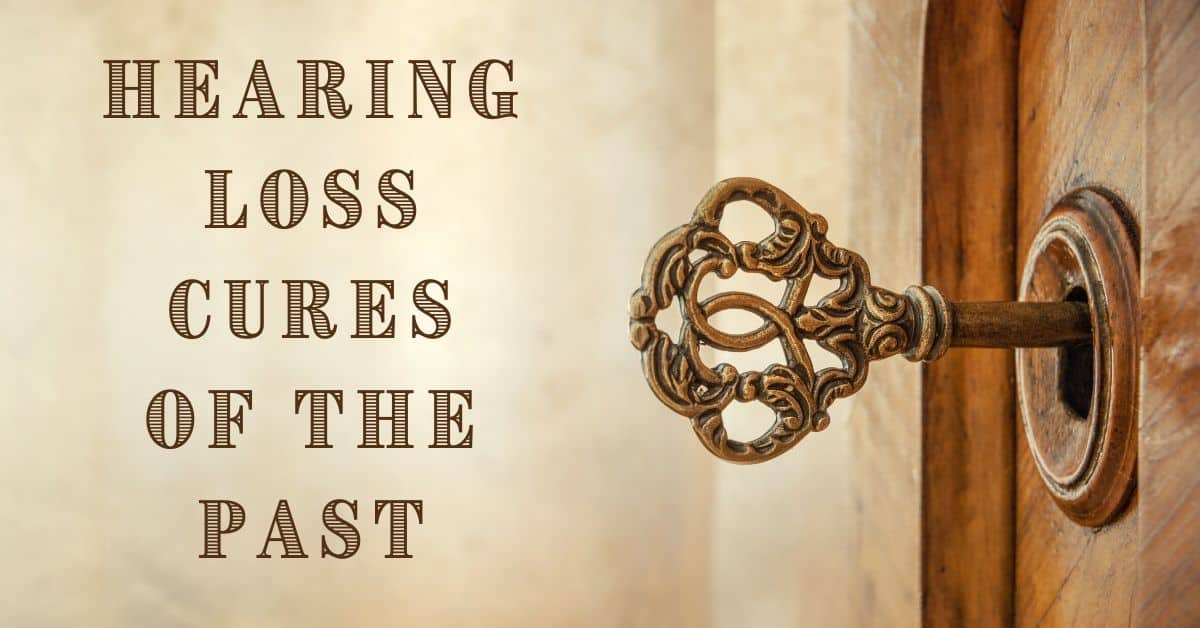
The best remedy for hearing loss is, of course, hearing aids. For those whose ears do not function, cochlear implants can “hear” for them, sending electrical representations of sound, like a healthy cochlea would create, directly to the auditory nerve. This is the closest thing to a “cure” for hearing loss and deafness that we have seen in human history, and it is now an outpatient procedure to have cochlear implants surgically installed. As exciting as this technology is, the sound provided by cochlear implants is nowhere near the quality that a person with “normal” hearing experiences, and those who use cochlear implants still need to rely heavily on lip-reading and/or sign language to communicate effectively.
Modern genetic research has led to some exciting possibilities as well, discovering genes that are responsible for hearing ability and even discovering that nearly all hearing loss has a genetic component. While trials with mice have shown promising results, a genetic cure for hearing loss is still a long way off.
As much as we desire to see a cure for hearing disability today, our desire is no stronger than it has been in past generations. Over the years, many “cures” have come and gone, all of them promising much more than they could offer.
Beethoven
Beethoven had hearing problems even in his youth. In his twenties, he suffered what is now called “tinnitus” (ringing or buzzing in the ears). To deal with this, he was prescribed almond oil earplugs and isolation, the theory being that he should remove himself from any sources of sound in order to rest his ears and let them repair themselves. We now know that neither of these works. He was also subjected to “galvanism,” whereby the problematic area of the body is stimulated with electricity. In Beethoven’s case, it was his ears that were electrocuted. Unsurprisingly, this didn’t work, and in fact it is now speculated that the treatments that were attempted to “cure” Beethoven’s tinnitus in his youth may have led to his deeper hearing problems later in life.
Today, hearing aids can help alleviate tinnitus by providing a masking tone. While this goes a long way toward relieving the irritation associated with tinnitus, it is not what we can properly call a “cure.”
Blistering
Like galvanism, blistering was a type of treatment that would have been applied to most any area of the body that was in pain or not functioning properly. It seems that up until the advent of what we call “modern medicine,” treatments were usually created to deal with “illness,” not any specific illness, and their effectiveness was due to the placebo effect. While the placebo effect is a useful medicinal phenomenon, the treatment should not itself be injurious, and blistering can definitely do harm to an already troubled patient.
Blistering involved the application of a caustic plaster to the skin near the ailing part of the body. Like the name of the practice suggests, blisters would form due to the injury to the skin. When the blisters would pop and the pus would run out, the practitioner would claim that the pus was actually the flow of “toxins” leaving the body.
Contraptions
In the 19th century, when inventors began creating mechanical wonders at breakneck speed, it’s no surprise that the placebo effect could be harnessed when a patient felt they were receiving the benefit of some new mechanical device that would have been impossible only a few decades ago.
When this principle was applied to hearing loss, huge machines that did little besides produce vibration would be mated to the ears. Unfortunately, this practice did nothing to cure hearing loss.
Artificial Eardrums
An interesting attempt at a cure that actually was successful in a few cases, this involved replacing a destroyed eardrum with some kind of thin membrane. Gutta percha with a silver wire stem, India rubber, lint, metal foil, or the membrane from a chicken egg might be inserted into the ear to replace an eardrum. While in most cases this only scratched an itch, absorbed some seepage, or simply did nothing at all, some patients whose only actual affliction was a broken eardrum did restore a little hearing ability.
Unfortunately, the method was packaged and marketed out of the back of magazines as a cure-all for hearing loss up until the 1920s. Due to the style of implementation and the misapplication of the procedure, most artificial eardrums did more harm than good. Today, some people are receiving artificial eardrums made of space-age materials that are actually quite effective. However, these are only a “cure” for hearing loss if the only cause of your hearing loss is an irreparable ruptured eardrum, which is quite rare.
Treating Hearing Loss
Fortunately, these days, people with hearing loss have excellent technological options available! If you believe you may have a hearing loss, contact us today to schedule a hearing test and to learn about how hearing aids can benefit you.
